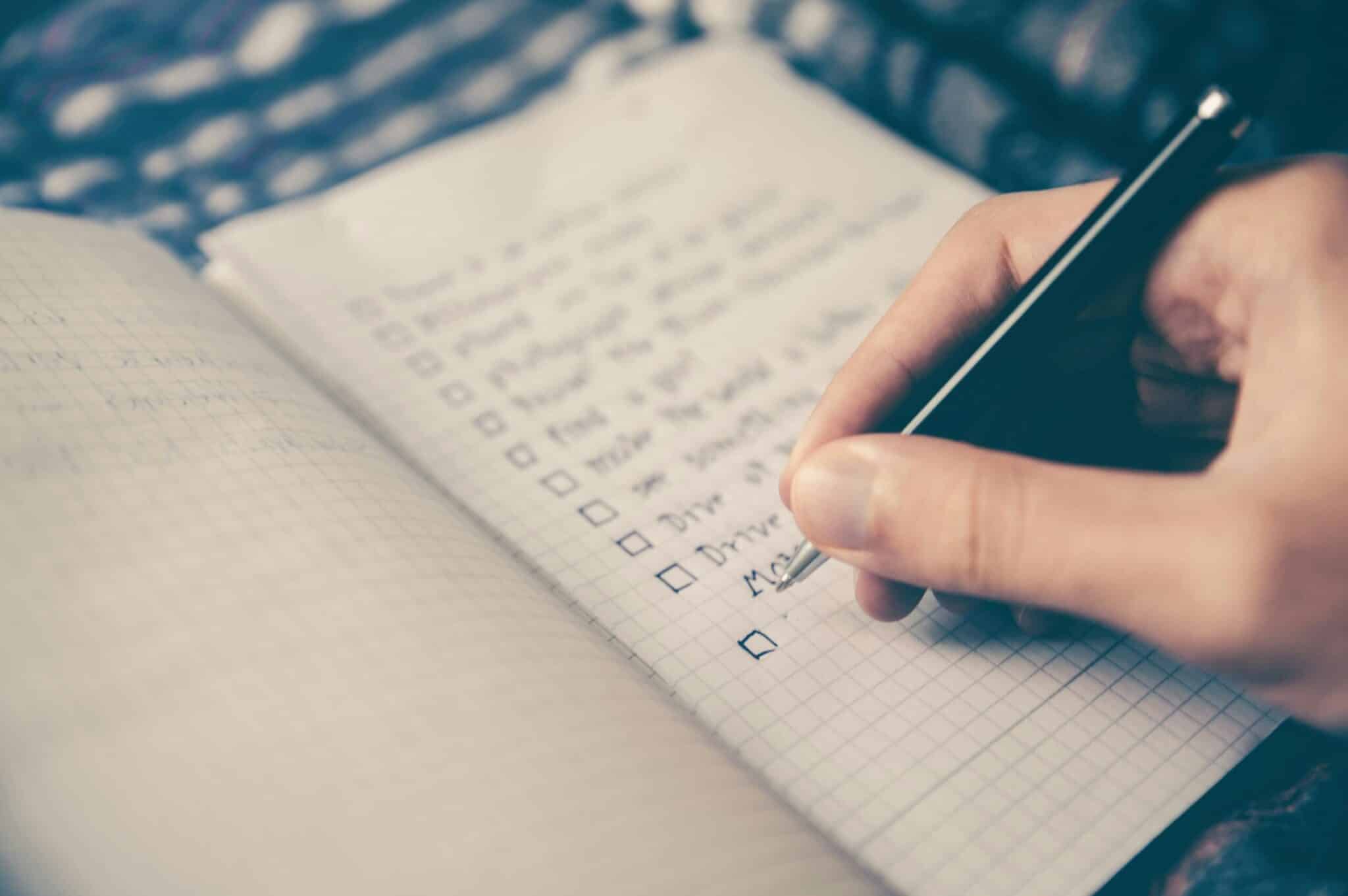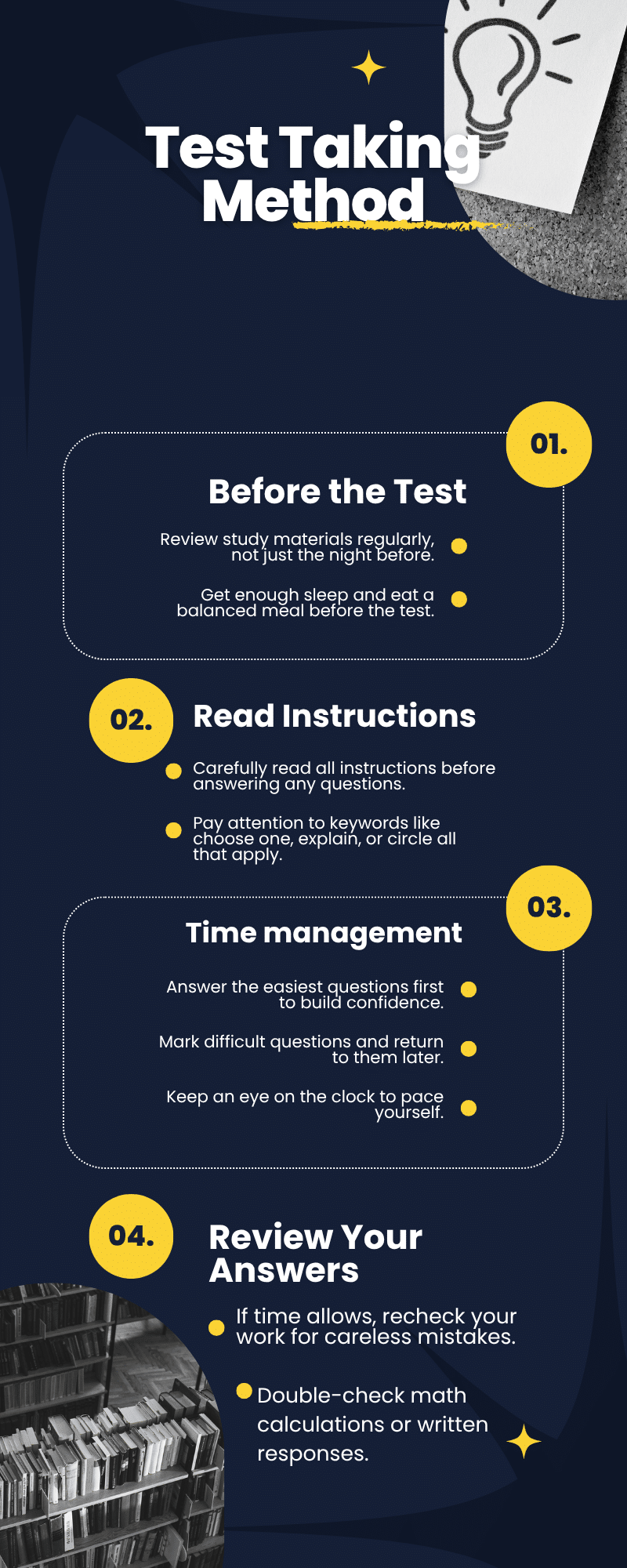Understanding the Importance of Grades

Grades are a fundamental part of every student’s academic journey. They act as benchmarks for performance, effort, and progress in school. Research from the American Psychological Association explains that grades help students develop discipline, responsibility, and time management—skills that extend far beyond the classroom. High grades often lead to more opportunities, including scholarships and access to competitive academic programs, according to a Harvard University Education Review study.
Beyond future opportunities, grades can also influence how students view themselves. The University of Michigan Learning Lab found that consistent academic feedback can strengthen motivation and engagement. When students receive constructive evaluations, they tend to take greater ownership of their learning. However, it’s equally important to understand that grades are not a perfect reflection of intelligence. The Stanford Center for Learning Research highlights that effort, persistence, and a growth mindset play a much larger role in long-term success than test scores. one.
- Grades open doors to advanced studies and scholarships.
- They build habits that support lifelong learning.
- Most importantly, they reflect progress, not perfection.
Ultimately, striving for better grades is valuable, but the process of improvement—learning from mistakes, managing time wisely, and staying motivated—is what truly shapes a student’s future.
Setting Realistic Academic Goals

Setting clear and realistic goals is one of the most effective ways for students to improve their grades. A study from the University of Nebraska–Lincoln College of Education found that students who set structured academic goals are more likely to see measurable improvement in performance within a semester. Goals give direction, increase motivation, and help students turn large challenges into manageable steps.
The SMART framework—Specific, Measurable, Achievable, Relevant, and Time-bound—is a simple but powerful method for creating meaningful academic goals. Instead of saying, “I want better grades,” students can set a goal like, “I want to raise my math grade from a C to a B by the end of the semester.” According to the Journal of Educational Psychology, this level of specificity makes goals more achievable because students can clearly track progress and make adjustments along the way.
When setting academic goals, It’s also important to keep them realistic. Harvard Education recommends focusing on gradual progress rather than perfection. For example, instead of aiming to be the top student in every subject, learners might choose to improve one letter grade in the subjects they find most challenging.
A few practical goal-setting tips include:
- Break goals into smaller tasks: Dividing objectives into daily or weekly milestones prevents burnout.
- Review progress regularly: Reflecting on grades and study habits helps identify what’s working.
- Celebrate small wins: Recognizing progress, even small improvements, builds motivation and confidence.
Finally, connecting goals to personal interests makes them more sustainable. For instance, a student passionate about science may set a long-term goal of earning a scholarship in a STEM program. Goals that feel meaningful encourage persistence even when challenges arise. The key is to focus on steady growth, not just the final result.
Effective Study Techniques for Better Retention

Studying smarter—not longer—is one of the most powerful ways to improve academic performance. Researchers from Princeton University found that students who use active learning strategies remember up to 50% more material than those who only reread notes. Instead of passively reviewing pages of information, effective studying means engaging the brain through recall, organization, and reflection.
One of the most proven techniques is active recall.Testing yourself on what you’ve learned strengthens memory and understanding. Using flashcards, practice questions, or explaining concepts aloud are great ways to apply this method. The key is retrieval—forcing your brain to recall information rather than just reread it.
Another evidence-backed method is spaced repetition. This strategy involves reviewing information at increasing intervals over time instead of cramming before exams. Research from the University of California, San Diego Learning Lab found that spaced review helps transfer information from short-term to long-term memory, leading to higher test scores and better retention weeks after studying.
The Pomodoro Technique is also widely recommended to improve focus. It involves studying for 25 minutes followed by a 5-minute break. This method, prevents mental fatigue and helps students maintain concentration for longer study sessions.
A newer and increasingly popular method among students is blurting. This involves writing down everything you can remember about a topic without looking at your notes, then comparing your recall to the original material.Blurting helps identify weak areas quickly and strengthens understanding by forcing the brain to actively retrieve and organize information.
Students can also benefit from visual methods like mind mapping, which helps them organize ideas and see relationships between concepts. Visual learning tools like these have been shown by Oxford University researchers to improve comprehension and retention, particularly in subjects that require complex problem-solving.
Here’s a quick summary of what works best:
- Use active recall to strengthen memory.
- Apply spaced repetition to retain information long-term.
- Try blurting to find weak spots and reinforce learning.
- Use Pomodoro sessions to prevent burnout.
- Create mind maps for visual understanding.
When combined, these techniques create a balanced and effective study system that supports long-term learning, not just short-term memorization.
Time Management Skills for Success

Good time management helps students get more done with less stress. Planning ahead gives you space to study, sleep, and do other important things.
Start with an academic calendar that lists tests, due dates, and major projects. Seeing everything in one place helps you avoid last-minute cramming and makes planning realistic. Many students find it useful to block out daily study times on the calendar and protect those blocks like appointments (Harvard Business Review on time blocking).
Prioritization is key. Use a simple version of the Eisenhower Matrix to sort tasks: urgent/important, important/not urgent, urgent/not important, and neither. Focus first on tasks that are both urgent and important, and schedule time for the important-but-not-urgent work so it does not become an emergency later.
Build a study routine with these steps:
- Plan weekly: Each Sunday, write down the week’s top priorities and study blocks.
- Time-block work: Reserve 45–90 minute blocks for deep study, and place short breaks between them.
- Batch similar tasks: Group reading, problem sets, or review sessions together so your brain stays in the same mode.
- Use reminders: Calendar alerts or a planner app help you start and stop on time.
Also, limit multitasking. Research summarized by the American Psychological Association shows that switching between tasks reduces focus and increases the time needed to finish work. Try single-tasking during study blocks and put your phone away or in Do Not Disturb mode.
Finally, reflect each week. Ask: What did I complete? What took longer than expected? What will I change next week? Small weekly adjustments keep your plan realistic and help you improve over time (University academic success centers).
By planning ahead, prioritizing work, protecting study time, and reviewing progress weekly, students can manage their workload more calmly and raise their grades without burning out.
Creating an Effective Study Environment

Establishing a conducive study environment is vital for enhancing productivity and focus, ultimately aiding in achieving better grades in school. A well-organized space can significantly minimize distractions and help with concentration on academic tasks. To create an effective study area, begin by ensuring that it is both comfortable and free from unnecessary clutter. Utilize storage solutions such as shelves, drawers, or bins to keep books and materials organized, making them easily accessible while reducing visual chaos.
A strong study routine begins with the right environment. The University of North Carolina Learning Center explains that a well-organized space can improve focus and reduce distractions. When your surroundings support your goals, studying becomes easier and more productive.
Start by keeping your study area clean and clutter-free. A desk with only the essentials—laptop, notebooks, and pens—helps signal your brain that it’s time to focus. The Journal of Environmental Psychology reports that clutter increases stress and lowers concentration, making it harder to stay engaged with your work.
Lighting also matters more than most students realize. Natural light improves alertness and mood, according to the National Institutes of Health. If sunlight isn’t available, use a soft white LED desk lamp that minimizes glare. The right lighting reduces fatigue and helps you stay focused longer.
To build your ideal study zone, try these quick steps:
- Choose a quiet spot: Avoid places with constant movement or noise.
- Control your tech: Keep phones on silent or in another room.
- Add comfort: Use a supportive chair and proper posture to stay alert.
- Personalize your space: A few motivational quotes, plants, or calming colors can make studying feel inviting rather than stressful.
Technology boundaries are just as important as physical setup. Research from the University of Chicago shows that even the presence of a smartphone—face down and silent—can lower available brainpower. Try using “Focus Mode” or productivity apps that block distracting sites while studying.
A good study space doesn’t have to be fancy—it just has to be intentional. When you control your environment, you control your focus. The result is less wasted time, better understanding, and a calmer mind during exams.
Utilizing Resources: Tutors, Study Groups, and Online Materials

You don’t have to tackle learning challenges alone. The most successful learners know when—and how—to ask for help. People who use tutoring or study groups earn, on average earn higher-than those who study entirely by themselves. Collaboration can turn confusion into clarity.
Start with tutors. Whether through your school’s academic center or private sessions, tutors provide personalized explanations and accountability. The Journal of College Student Retention notes that consistent tutoring improves comprehension, especially in subjects like math and science, where building-block skills are essential.
Next, consider joining or forming study groups. When structured correctly, study groups can:
- Help clarify difficult topics through peer discussion.
- Encourage active recall by teaching and explaining to others.
- Create motivation through shared goals and accountability.
To make study groups effective:
- Keep groups small (three to five people).
- Assign roles like note-taker, question leader, and explainer.
- Set clear agendas before each session.
Students
should also explore online learning resources. Use educational platforms like YouTube EDU, Coursera, and Khan Academy for supplemental learning. Many schools also provide free access to tools like Google Workspace or digital libraries, which can be powerful for organizing notes and accessing scholarly materials.
If you want to dig deeper, ScholarlySphere offers a range of free educational blogs tailored for middle and high school students. These tools simplify complex study methods—like Cornell note-taking or spaced repetition—into easy, ready-to-use formats.
When you combine your effort with the right support, you create a stronger foundation for learning and more confidence in yourself. Working together doesn’t just raise your grades—it teaches you how to succeed anywhere.
Staying Healthy: The Connection Between Physical and Academic Performance

Your body and brain work together. When you sleep, eat, and move well, your thinking gets clearer and studying feels easier. Research shows that good sleep helps memory, regular exercise boosts focus, and balanced nutrition fuels your brain for learning.
Sleep matters most. Aim for 8–10 hours most nights so your brain can store what you learned. When you’re well-rested, you’ll understand lessons faster and do better on tests.
What to eat for better thinking:
- Choose whole foods like fruits, vegetables, whole grains, and lean protein.
- Avoid heavy sugary snacks before study sessions—they can make you crash.
- Drink water—staying hydrated helps you concentrate.
Move your body to sharpen your mind. Short walks, stretching, or a quick workout raise blood flow to the brain and reduce stress. Even 20–30 minutes a day can make a big difference in focus and mood.
Keep stress in check. Try simple breathing exercises, short breaks, or a quick walk when you feel overwhelmed. These habits lower anxiety and make studying more productive.
Quick checklist to stay sharp:
- Sleep 8–10 hours per night.
- Eat balanced, regular meals and hydrate.
- Move daily—aim for at least 20 minutes.
- Use short relaxation breaks during study sessions.
When you treat your body like study fuel, your grades and well-being both improve.
In conclusion, the interconnectedness of physical health and academic performance underscores the importance of proper nutrition, regular exercise, and sufficient sleep. Students who prioritize these aspects of their well-being not only improve their grades but also enhance their overall quality of life.
Developing Test-Taking Strategies

Tests are just the moment you show what you already know — and with a few smart moves, you can make that moment work for you. Start by practicing under real test conditions: time yourself, remove distractions, and use the same tools (calculator, scratch paper) you’ll have on test day. Research on retrieval practice shows that active recall during practice boosts real test performance (Roediger and Karpicke, 2006).
Before the test, calm your nerves. Try slow, deep breaths for a minute, remind yourself of one thing you know well, and use positive self-talk like, “I prepared; I can do this.” The American Psychological Association reports that brief relaxation and focused breathing can lower test anxiety and improve concentration. Get to the test site early so you can settle in and avoid last-minute stress.
During the test, work smart, not frantic.

- Skim the whole test first: Note sections and point values so you can plan time.
- Answer easy questions first: Build confidence and secure quick points.
- Use process of elimination for multiple choice: Cross out wrong options and make an educated guess if you must — Educational Testing Service recommends eliminating distractors to raise your odds.
- Mark and move: Flag hard questions to return to later; don’t let one problem steal your time.
- Show your work on math/short-answer items: Partial credit often adds up.
For essays and longer responses, start with a quick outline. Write a one-sentence thesis, list two or three main points as topic sentences, then add one example or piece of evidence under each point. This structure keeps your writing clear and makes it easier for graders to follow your thinking. Time-box each part: spend a set amount on planning, most time on writing, and five minutes at the end to proofread.
If you blank on something, use quick fallbacks:
- Try to reconstruct related facts (dates, definitions, formulas) — often one memory cue unlocks more.
- Sketch a timeline, diagram, or formula sheet on scratch paper to jog memory.
- If you still can’t recall, move on and return later — your brain sometimes retrieves answers after a break.
After the test, don’t just forget it. Review mistakes calmly to learn what went wrong: was it content you didn’t know, poor time management, or careless reading of the question? The best improvement comes from fixing the process, not from blaming yourself. Schedule one short review session within 48 hours (when your memory is still fresh) and one deeper review a week later to lock in what you learned (spaced repetition and retrieval practice help here).
Quick Test-Day Checklist
- Bring required supplies (IDs, calculators, extra pencils).
- Eat a balanced meal and hydrate; avoid heavy sugar before the test.
- Arrive early and do a 2-minute breathing exercise.
- Read directions carefully; underline key words.
- Pace yourself and flag the tough questions.
Use these strategies consistently in practice, and they’ll become automatic on test day — leaving you more calm, faster, and more accurate.
FAQ
Reflecting on Progress and Making Adjustments

Whether you’re in elementary, middle, or secondary school, turn practice into real improvement. After each week or test, take a few minutes to check what worked and what didn’t. When you review honestly, you can fix small mistakes before they become big problems.
Start a simple log. Write the date, what you studied, one win, and one thing to change next time. This only takes two minutes but shows patterns fast — for example, you might notice you always lose points on application questions or you focus better in the evenings.
Use these quick steps to make adjustments that actually help:
- Identify one problem: Be specific (e.g., “I ran out of time on section B”).
- Pick one small change: Try a 10-minute timed practice for that section.
- Test the change for a week: See if it improves your score or speed.
- Repeat or revise: Keep what works, ditch what doesn’t.
Get feedback from others. Ask a teacher what one thing you can do to improve, or show a friend your study routine and ask for ideas. External input often points out blind spots you miss on your own.
Track results simply — use a checklist, a note on your phone, or a spreadsheet. Record test scores, how many blurting sessions you did, or minutes studied. When you can see progress, you stay more motivated and make smarter choices about where to spend your time.
Ultimately, being open to modifying study techniques plays a significant role in a student’s academic journey. It promotes a culture of continuous improvement, allowing students to evolve their practices rooted in personal insights and external guidance. Embracing this mindset cultivates resilience and adaptability—key traits for academic success. By actively engaging in reflection and being receptive to change, students can enhance their academic performance and attain their educational goals more effectively.
How will you start applying these strategies to improve your own learning today?
Key Points
| Strategy | Purpose | Tips for Implementation |
|---|
| Active Recall | Strengthen memory and understanding | Use flashcards, self-quizzing, or explain concepts aloud without looking at notes |
| Spaced Repetition | Move information to long-term memory | Review material at increasing intervals over days or weeks |
| Blurting | Identify weak areas and reinforce learning | Write down everything you remember about a topic, then compare to your notes |
| Pomodoro Technique | Maintain focus and prevent burnout | Study 25–50 minutes, then take a 5–10 minute break |
| Mind Mapping | Visualize relationships between ideas | Draw diagrams showing connections between concepts |
| Time Management | Organize study and personal tasks efficiently | Use calendars, to-do lists, and prioritize tasks based on urgency and importance |
| Healthy Habits | Improve cognitive function and focus | Sleep 8–10 hours, eat balanced meals, stay hydrated, and exercise daily |
| Test-Taking Strategies | Reduce anxiety and maximize performance | Practice under test conditions, use elimination and educated guessing, and review mistakes |
Works Cited
American Psychological Association. “Stress in America: Are Teens Adopting Adults’ Stress Habits?” American Psychological Association, 2013,
https://www.apa.org/news/press/releases/stress/2013/teen-stress Accessed 20 Oct. 2025.
Harvard Business Review. “Help Your Team (Actually) Work Smarter, Not Harder.” Harvard Business Review, 28 June 2022,
https://hbr.org/2022/06/help-your-team-actually-work-smarter-not-harder Accessed 20 Oct. 2025.
National Center for Education Statistics. Report on the Condition of Education 2021. U.S. Department of Education, May 2021,
https://nces.ed.gov/pubs2021/2021144.pdf Accessed 20 Oct. 2025.
Harvard Kennedy School. Scholarships & Fellowships. Harvard University, https://www.hks.harvard.edu/admissions-aid/funding-your-education/funding-your-masters-education/scholarships-fellowships Accessed 20 Oct. 2025.
Straub, Evan Ogg. “Giving Good Online Feedback.” University of Michigan Center for Research on Learning and Teaching, 24 Apr. 2020, https://onlineteaching.umich.edu/articles/giving-good-online-feedback/ Accessed 20 Oct. 2025.
Dweck, Carol S. “Growth Mindset and Enhanced Learning.” Stanford Teaching Commons, https://teachingcommons.stanford.edu/teaching-guides/foundations-course-design/learning-activities/growth-mindset-and-enhanced-learning Accessed 20 Oct. 2025.
Clarke, O.D. LinguaFolio Goal Setting Intervention and Academic Achievement. University of Nebraska–Lincoln, 2013, https://digitalcommons.unl.edu/dissertations/AAI3604640/ Accessed 20 Oct. 2025.
Wolters, Christopher A. “Advancing Achievement Goal Theory: Using Goal Structures and Goal Orientations to Predict Students’ Motivation, Cognition, and Achievement.” Journal of Educational Psychology, vol. 96, no. 2, 2004, pp. 236–250. https://doi.org/10.1037/0022-0663.96.2.236 Accessed 20 Oct. 2025.
Harvard Graduate School of Education. HGSE Student Handbook 2021–2022. Harvard University, 2021, https://www.gse.harvard.edu/sites/default/files/hgse_student_handbook_21-22.pdf Accessed 20 Oct. 2025.
Princeton University, McGraw Center for Teaching and Learning. “Take Great Notes.” Princeton University, https://mcgraw.princeton.edu/ Accessed 20 Oct. 2025.
Cepeda, Nicholas J., et al. “Spacing Effects in Learning: A Temporal Ridgeline of Optimal Retention.” Psychological Science, vol. 19, no. 11, 2008, pp. 1095–1102. https://doi.org/10.1111/j.1467-9280.2008.02209.x
Biwer, Felicitas. “Understanding Effort Regulation: Comparing ‘Pomodoro’ Breaks and Self-Regulated Breaks.” British Journal of Educational Psychology, vol. 93, no. 3, 2023, pp. 356–373. https://doi.org/10.1111/bjep.12593
Oxford Summer Courses. “Mind Mapping for Study.” Oxford Summer Courses, https://oxfordsummercourses.com/articles/mind-mapping-for-study Accessed 20 Oct. 2025.
Zao-Sanders, Marc. “How Timeboxing Works and Why It Will Make You More Productive.” Harvard Business Review, 12 Dec. 2018, https://hbr.org/2018/12/how-timeboxing-works-and-why-it-will-make-you-more-productive Accessed 20 Oct. 2025.
The Eisenhower Matrix: How to Prioritize Your To-Do List.” Asana, 29 Jan. 2025, https://asana.com/resources/eisenhower-matrix
American Psychological Association. “Multitasking: Switching Costs.” APA, https://www.apa.org/topics/research/multitasking Accessed 20 Oct. 2025.
Reflective Advising Packet for Advisors.” Illinois Wesleyan University, https://www.iwu.edu/advising/faculty/ra.packet.pdf Accessed 20 Oct. 2025.
University of North Carolina Learning Center. “Distractions.” UNC Learning Center, https://learningcenter.unc.edu/tips-and-tools/take-charge-of-distractions/ Accessed 20 Oct. 2025.
Clutter and Mental Health: How Can Clutter Cause Stress and Anxiety?” UPMC, https://share.upmc.com/2021/02/clutter-and-stress/ Accessed 20 Oct. 2025.
National Institutes of Health. “Daylight Exposure and Sleep: Impact on Mood and Alertness.” PMC, U.S. National Library of Medicine, https://www.ncbi.nlm.nih.gov/pmc/articles/PMC4031400/ Accessed 20 Oct. 2025.
Ward, Adrian F., et al. “Brain Drain: The Mere Presence of One’s Own Smartphone Reduces Available Cognitive Capacity.” Journal of the Association for Consumer Research, vol. 2, no. 2, 2017, pp. 140–154. https://www.journals.uchicago.edu/doi/full/10.1086/691462 Accessed 20 Oct. 2025.
National Education Association. “High-Impact Tutoring.” NEA Today, https://www.nea.org/nee-today Accessed 20 Oct. 2025.
Cuseo, Joe. “The Role of Tutoring in College Student Retention: Research-Based Practices.” Journal of College Student Retention: Research, Theory & Practice, vol. 23, no. 2, 2021, pp. 173–190. https://files.eric.ed.https://files.eric.ed.gov/fulltext/EJ1285219.pdf Accessed 20 Oct. 2025.
Pew Research Center. “The Internet Plays Less of a Role in Lifelong Learning for Those with Lower Levels of Education and Income.” Pew Research Center, 22 Mar. 2016, https://www.pewresearch.org/internet/2016/03/22/the-internet-plays-less-of-a-role-in-lifelong-learning-for-those-with-lower-levels-of-education-and-income/
National Sleep Foundation. “Memory and Sleep.” Sleep Foundation, https://www.sleepfoundation.org/how-sleep-works/memory-and-sleep Accessed 20 Oct. 2025.
Centers for Disease Control and Prevention. “Boost Brain Health with Physical Activity.” CDC, https://www.cdc.gov/physical-activity/features/boost-brain-health.html Accessed 20 Oct. 2025.
Verywell Health. “Foods for Brain Health.” Verywell Health, https://www.verywellhealth.com/foods-for-brain-health-11773216 Accessed 20 Oct. 2025.
Roediger, Henry L., and Jeffrey D. Karpicke. “Test-Enhanced Learning: Taking Memory Tests Improves Long-Term Retention.” Psychological Science, vol. 17, no. 3, 2006, pp. 249–255. https://doi.org/10.1111/j.1467-9280.2006.01693.x Accessed 20 Oct. 2025.



Pingback: Better Grades: Top Tips to Get Better Grades in School
My partner and I stumbled over here coming from a different page and thought I might check things out. I like what I see so i am just following you. Look forward to finding out about your web page yet again.